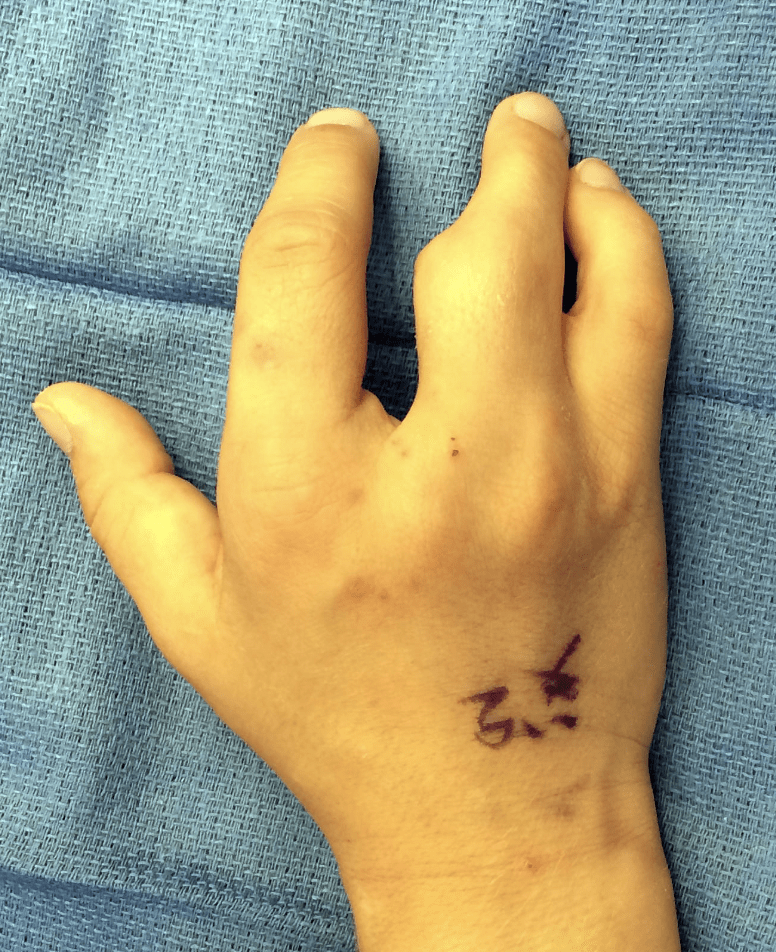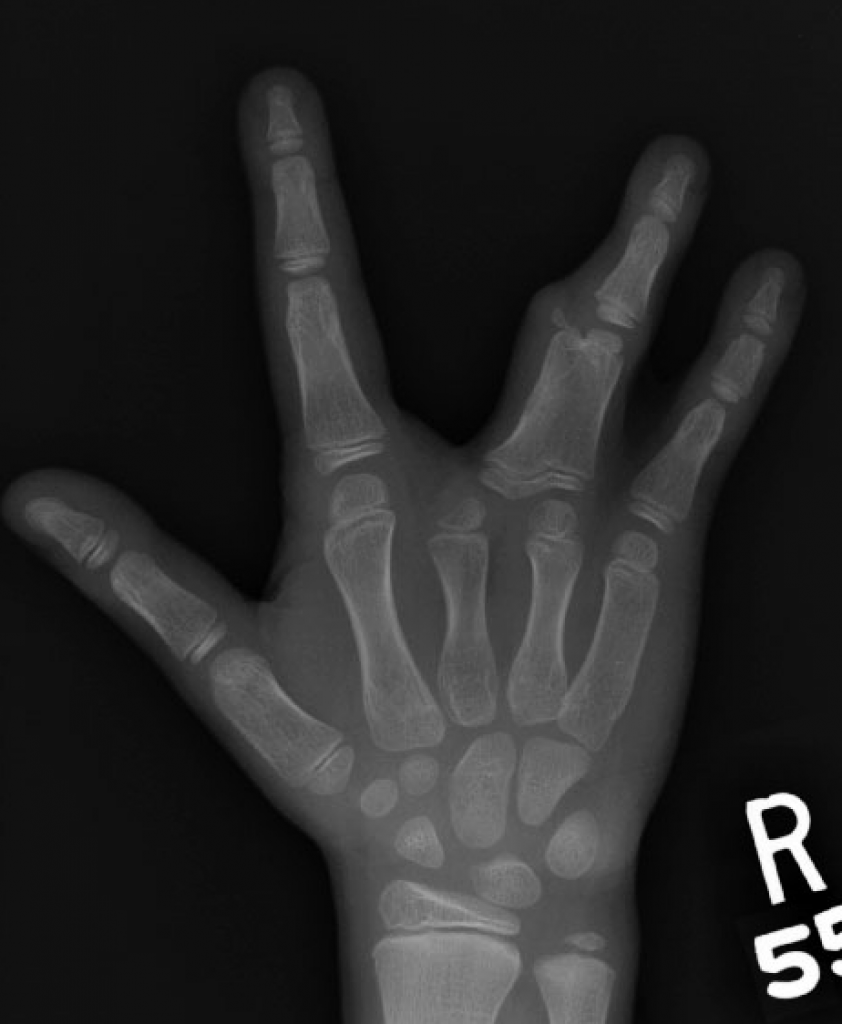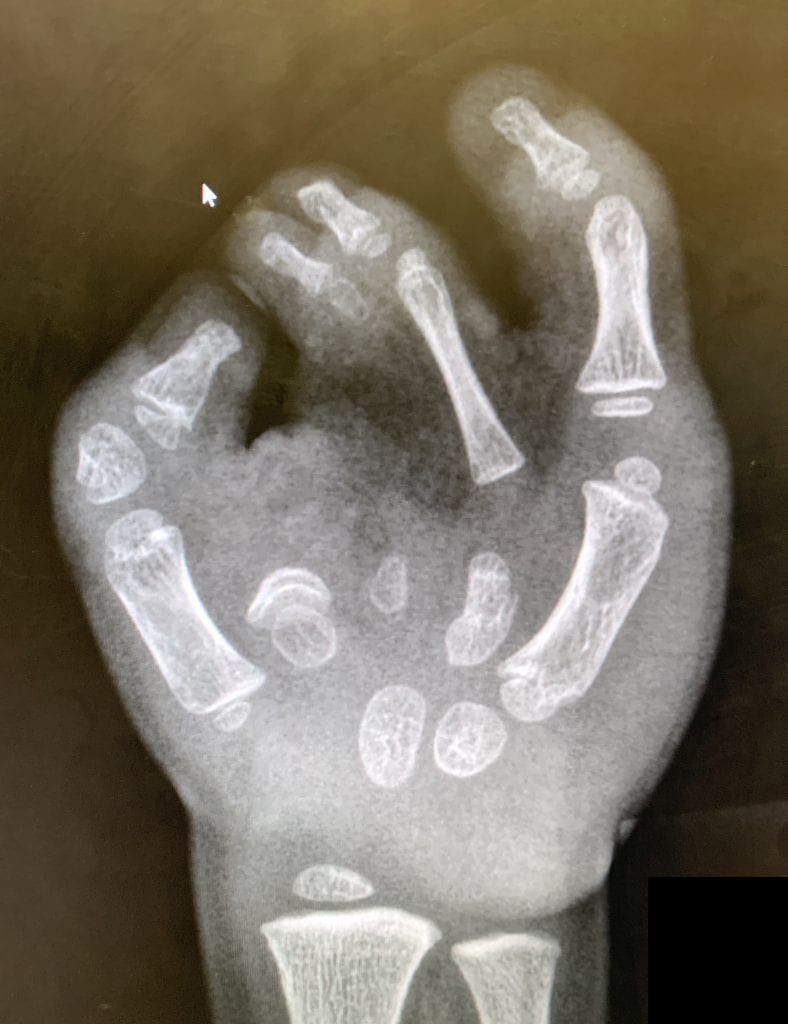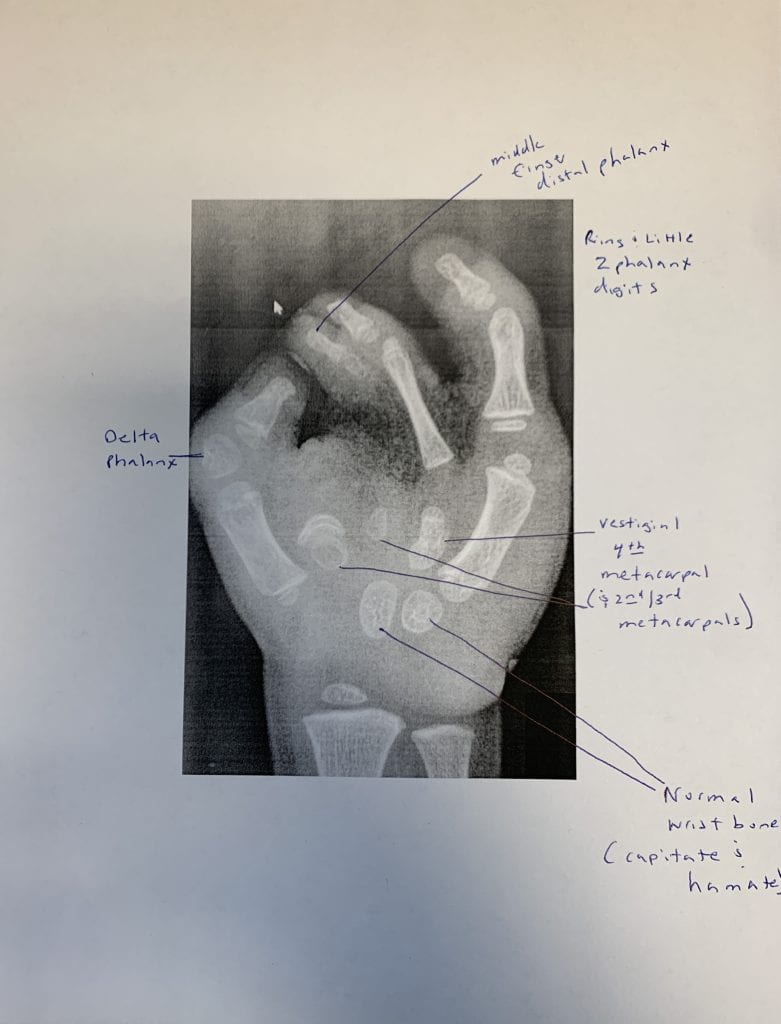Both cleft hand and symbrachydactyly may present in different ways, which can make it difficult sometimes to understand the difference. Symbrachydactyly presents in 4 types for the hand: cleft type (the point of this post), monodactyly type (only a thumb), short finger type, and peromelic (just nubbins). I have previously posted about symbrachydactyly here, here, and here. Cleft hand also has a wide range of appearance, can vary in the number of fingers, and in the general appearance- more can be found on my blog here, here, and here.
These two diagnoses have some overlap and an unfortunate naming overlap but they are very different. Symbrachydactyly is typically not hereditary but rather happens when the developing limb bud has an insult before 8 weeks of gestation. This affects the area called the mesoderm while the apical ectodermal ridge is generally ok- this means that finger tips and finger nails are often present but the bones supporting them may not be. In contrast, with cleft hand, the apical ectodermal ridge and the mesoderm are affected, creating a complete finger loss and potential deep cleft in the hand. See previous posts for more information.
This is an example of cleft hand. And again, the appearance can vary widely from patient to patient. The key feature is the missing middle finger. One bone (proximal phalanx) of the middle finger is merged to the ring finger. Overall function is good. The first web space (thumb web) is also good.


Symbrachydactyly, cleft type also has missing middle bones but is very different in appearance.



In this post, I try to explain some differences between cleft hand and symbrachydactyly, cleft type. These are very different diagnoses and have different treatments. But, both can present in many, many ways so it is difficult to capture the full spectrum of either in this post with just one hand.
Charles A. Goldfarb, MD
Congenital Hand Surgeon at Washington University, St Louis Childrens Hospital, and the Shriners Hospital
Hello. thank you for sharing such important information. Is it possible to differentiate between cleft hand and symbrachydactyly still during pregnancy? I just learnt my baby (21 weeks pregnant now) has on the left hand a missing finger (the middle one) but the hand itself looks good to me. While the right hand he might have an extra finger (very small). I would love to know more about the issue so we can better prepare. Happy to send scan photos if that’s helpful. Thank you very much
Congratulations on your child and good luck with the remaining pregnancy. Most ultrasound images are not sufficient to differentiate but some high definition ones may be. While I am no expert of interpreting ultrasound images, those performing the studies should be. If all the digits look good except the middle finger, the diagnosis is likely cleft hand. The extra digit on the opposite hand would be unusual for either diagnosis and may just be another unrelated anomaly (although two truly spontaneous hand differences is uncommon). I hope that helps at least somewhat.